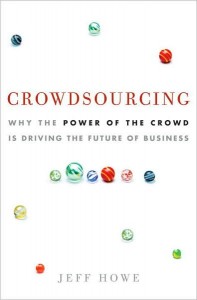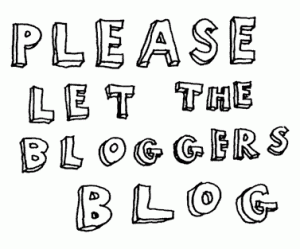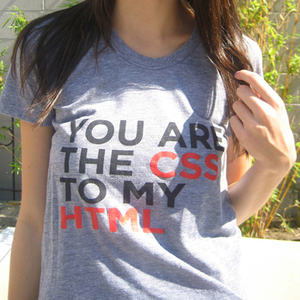Briggs Chapter 3
Have you ever heard the phrase, two heads are better than one?
Briggs moved on in “Journalism Next” to crowdsourcing. What is crowdsourcing? “It is a relatively new term, coined by Jeff Howe in a 2006 article for Wired News. Think of crowdsourcing like outsourcing, the term it spun off from. Crowdsourcing harnesses the sustained poer of community to improve a service or information base” –Mark Briggs.
Incase you are curious, here is the front cover of Howe’s book:
Popular crowdsourcing sites:
The concept is important because sites can receive thousands of contributions. Blogs can turn into news stations and the coverage these sites get would never have happened without crowdsourcing.
Mark Briggs went on to describe beatblogging. I found a really great site, ironically called BeatBlogging.Org, with an article written by Jay Rosen that does an outstanding job defining and elaborating on what a beatblog is, what they look for, and how people can help.
Links are also a huge way to help power the web. They build readership and viewers usually come back for more. Take Google for example!
Briggs ended the chapter off by lying explaining that newspapers still tap the power of a crowd and that print is still unbelievably a powerful tool. Maybe next edition of Journalism Next, Briggs will update Chapter 3.
Filed under "Journalism Next" | Comment (0)Briggs Chapter 2
Advanced Blogging
The rules are different with blogs. Blogging reporters play off other information they find online, even linking stories and blogs that might have been thought of as competition just a few years ago.
Three characteristics define a blog:
- Frequently updated (recently updated stuff on top)
- Entries are called, “posts” and each have a headline and body. Entries include links, photos, and graphics
- Contains a link to allow readers to comment
Question: When and why did blogs change web publishing according to Briggs?
Answer: After the terrorist attacks of Sept. 11, 2001, blogs become a way for people to share their responses and experiences during that day, along with thoughts on where the country was headed.
Blogger Language:
Post: Entry of a blog
Permalink: Link available of each post that provides direct access to that post
Trackback: Mechanism for communication between blogs, so bloggers know who is linking to their material
Blogroll: Collection of links found on sidebar of blog
Vblog: Blog that features video commentary
Moblog: Blogging from a mobile device
Top 10 blogs according to Briggs?
- The Huffington Post
- TechCrunch
- Mashable
- Gizmodo
- Engadget
- The Official Google Blog
- Boing Boing
- Lifehacker
- Ars Technica
- TMZ.com
Source: Technorati. October 2009.
Where is lyndseymercier.onmason.com on that list Briggs? Very complete list.
Filed under "Journalism Next" | Comment (0)Briggs Chapter 1
We’re All Web Workers Now
…Says Mark Briggs.
This thirty some page chapter dove straight in describing the basics of how the internet works and the technical contruction of web pages .
Briggs had a graph like picture to help teach about Bits and Bytes. A comparable image I found was on a Discovery Company’s blog: HowStuffWorks. Check out Marshall Brain’s graph! The table shows the binary multipliers.
“Basic knowledge of HTML, CSS, and XML will enable you to see more clearly the opportunities for your journalism in the digital world” – Mark Briggs.
The text gave a basic tutorial on how the internet works and the difference between the Internet and the World Wide Web. Then Briggs went into detail about Syndicated content with RSS and how to set up an RSS reader and subscribe to feeds. FTP (file transfer protocol) was described, along with how web pages work.
Briggs explained how to build an HTML page quickly, and thankfully explained what CSS (cascading style sheets) is. Once you have a basic understanding of CSS, which was over my head when I first started reading about it, it was easy to be able to add CSS to HTML. Finally, the chapter wrapped up all the definitions with a final section on XML (essential markup language).
BUY IT HERE! How geeky I love it!
Filed under "Journalism Next" | Comment (0)Lecture by Claudia Holland on copyright and fair use
George Mason University’s copyright officer, Claudia Holland visited with Klein’s Online Journalism class to talk about copyright and fair use on Thursday, February 3, 2011.
The lecture was Power Point based and started out with explaining that copyrighted traits are expressions and originality; protected works are literary, architectural, sounds recordings, motion pictures, and other picture, graphic or sculpture work. Among the list included things that are not protected by copyright; ideas, public domain, titles names, short phrases, and generally anything published before 1923.
Holland went on to explain that fair use was made to benefit the public. Some parts of copyrighted material can be used in particular instances. Four elements that need to be considered are:
- Purpose and character of use
- Nature of the work
- Amount and substantiality of the portion used (10% is rule of thumb)
- Effect of the use on the potential market
Safe harbor was talked about as well; when setting up a blog or website, the author needs to protect oneself. One way to share ideas without getting into hot water over copyrights would be through Creative Commons. Their logo explains it all, “Share, remix, reuse, legally!”
Filed under Lecture | Comment (0)Media Consumption
One of our first homework assignments for Online Journalism was to read Eric Deggans’ article, What is Your Media Pyramid?
Essentially your media pyramid should end up looking like the food group pyramid. The bottom level of mine started out with the huge giants of media like powerhouses aol.com, msn.com, huffingtonpost.com and washingtonpost.com as my go to source to get news and information. Then for news tuned to my liking, in the middle block of my pyramid was facebook and twitter. The top of the pyramid, held what I use sparingly to get news from, like blogger and wordpress.
Filed under Homework | Comment (0)


